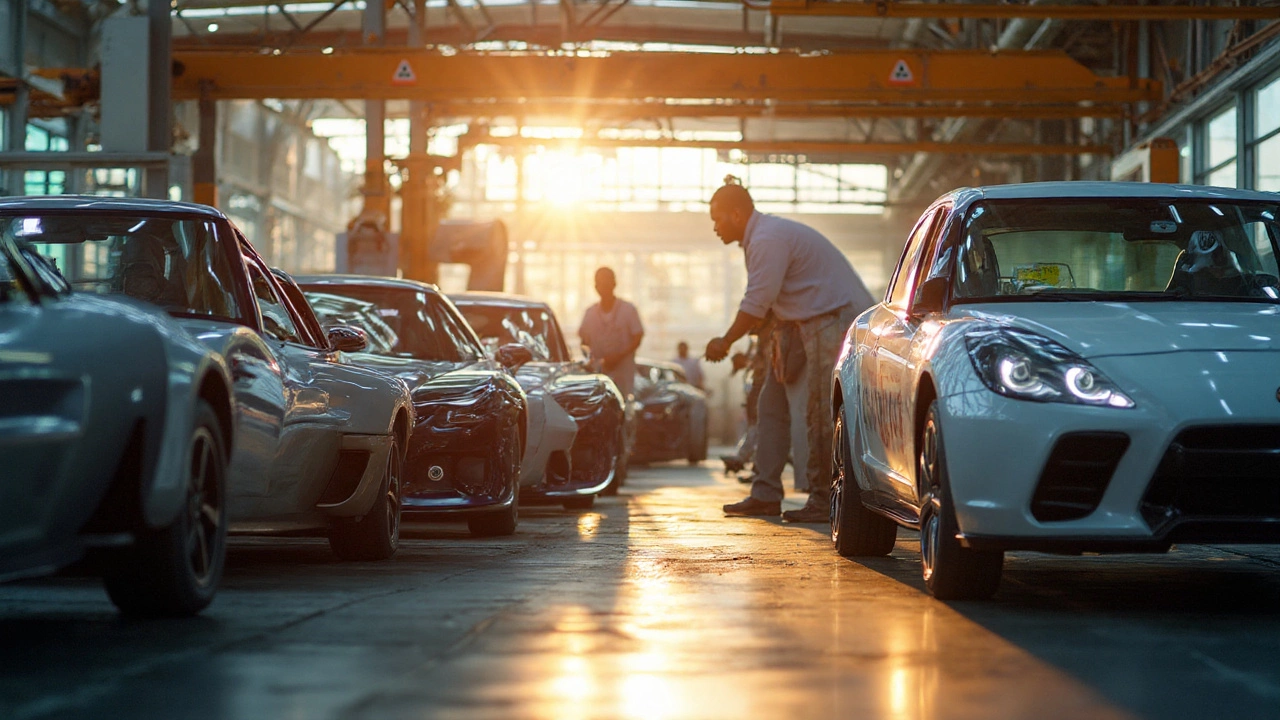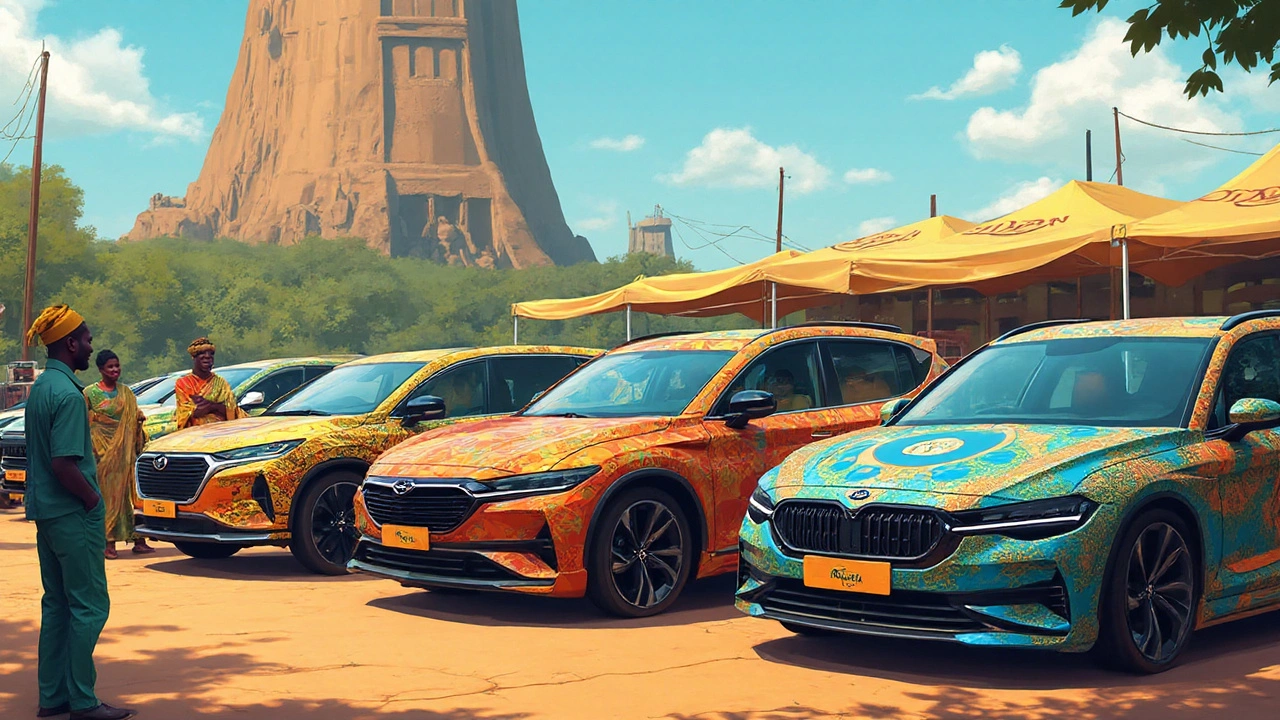
Picture this: You're zipping through the busy streets of Lagos or cruising down a coastal highway in Morocco. But here's the twist—you're riding in a car that's not just driven in Africa, but actually built there. Crazy, right? For most folks, Africa sounds far removed from the big world of automobile manufacturing. People instantly think of Toyota, Ford, Volkswagen—that whole gang from Asia, Europe, and the US. But something's shifting. Africa's rolling up its sleeves and getting under the hood. Not a lot of people know this, but several African countries are not just importing, but making and assembling some serious wheels right on home turf. From Nigeria to Uganda, from Egypt to South Africa, homegrown brands are popping up, and even global giants are calling Africa the next big playground. Why? Because demand is exploding and local innovation is pushing boundaries. Ready to meet Africa’s car builders and their creations?
African Auto Pioneer Brands: From Dreams to Roads
Let's start with actual African-born brands. Not subsidiaries, not knock-offs, but proper homegrown efforts. Talk about David taking on Goliath—these companies are scrappy, gutsy, and full of wild ambition. Innoson Vehicle Manufacturing (IVM) in Nigeria tops the list. This isn't some backyard operation. Since 2010, Innoson has been rolling out pick-ups, SUVs, vans, and even buses—all tailored to African conditions. Forget what you know about "imported is always better." IVM’s cars use up to 70% locally sourced parts for some lines, which is a massive deal. Instead of just assembling, they’re manufacturing. You’ll see their buses shuttling in Lagos and their SUVs dotting police fleets.
Cross over to Uganda and you can't miss Kiira Motors. Here’s what’s cool—Kiira started out of a university research project in 2011. They actually built Africa’s first electric car prototype. Kiira’s KIRA EV and Kayoola solar bus sound futuristic, but these aren’t just pipe dreams. By 2024, they were already producing buses tailor-made for Ugandan roads, tackling wild potholes and cutting fuel costs. Unlike other car brands, Kiira leans heavily into green tech—solar-powered and hybrid buses, keeping up with Africa’s push to embrace cleaner transportation as climate becomes a big worry.
And then there’s Mobius Motors in Kenya. If you want rugged, affordable, and practical, Mobius is the answer. Their Mobius II is designed for off-road and tough rural areas. Forget fancy interiors; these cars are about function—tough suspensions, space for transporting goods, no frills, but bulletproof. Mobius is betting big on the idea that a car doesn't need to be flashy—just reliable and built for Africa’s bumpy terrains.
And if Madagascar on your mental map? Check out Karenjy. Not only do they make cars locally, but they’re proud of using recycled parts, and their Fibra Synergie models are like Mad Max meets practicality. South Africa can’t be left out. The country has Birkin Cars (those classic Lotus 7 replicas) and even Optimal Energy (who tried their hands with electric cars, like the Joule, a few years back). Their runs were bumpy, but their ideas got the continent noticed.
And here's a quirky fact: In Ghana, Kantanka Automobile builds SUVs, pickups, and even tractors—sometimes with a side of homegrown flair like local gold trimmings. They aren’t mass producing on the level of German giants, but you’ll see their stamp on the local market and news headlines with cars tailor-made for African drivers by African designers. These brands prove Africa’s not waiting for outside help—it's making its own luck, and the results are increasingly visible on the streets.
Global Giants in Africa: Assembly Plants and Local Production
Now, let's talk about the big names. You’ll be surprised how many well-known cars get at least some of their assembly done in Africa. South Africa is hands-down the king of the continent on this front. Since the 1920s, the country has hosted plants for Ford, Mercedes-Benz, Toyota, Volkswagen, Nissan—you name it. Here’s the kicker: South Africa doesn’t just assemble imports. It actually exports finished cars to Europe and Australia, especially models like the VW Polo, Ford Ranger, and Toyota Hilux. The next time you see one of those cruising through Berlin or Sydney, remember—it might just have rolled off a line in Pretoria or Port Elizabeth.
Morocco is coming up fast, especially with Renault and Peugeot-Citroën. Renault’s Tangier plant pumps out over 400,000 vehicles a year, exporting Dacia Logans and Sandero models across Europe. No wonder Morocco grabbed the title of North Africa’s auto capital. The country offers incentives for foreign plants, trains skilled workers, and dangles easy trade with Europe. So, if you ever spot a Dacia, chances are it’s more Moroccan than you’d think.
And don’t sleep on Egypt—General Motors, Toyota, Nissan, and even local firms like Al-Nasr Automobile Company assemble or partially manufacture vehicles there. Egyptian assembly lines spit out everything from popular Chevrolet pickups to small sedans and buses mostly for local and regional markets.
Nigeria hosts several knock-down assembly plants. Peugeot is the veteran, but even Hyundai, Honda, and Volkswagen have set up facilities. These plants don’t create vehicles from scratch, but they do handle final assembly, adapt models to local needs, and support a growing number of local suppliers (which means jobs for thousands of people). Ethiopia has joined the game too—Marathon Motor Engineering, a local collaboration with Hyundai, assembles cars in Addis Ababa, and even Isuzu assembles commercial vehicles.
Here's an eye-opener: Tunisia, Kenya, Algeria, and Ghana are all getting a piece of the car game. It’s often about final assembly instead of full manufacturing, which sounds less glamorous but is a big stepping stone. As these plants pop up, local know-how grows, and over time you get more than just assembly—you start to see real local parts, tech, and supply chains building up. Africa’s not just importing—it's learning, adapting, and, step by step, building its own auto industry framework.

What Makes African-Car Manufacturing Unique?
So what’s different in Africa’s car scene compared to, say, Japan or Germany? For one, the needs here are totally unique. Most Africans don’t have smooth highways and luxury showrooms. You’ve got rural roads, unreliable fuel supplies, dust, wild weather, and the need for affordability above all. That’s the first big thing: African-made cars are usually tough, basic, and built to survive abuse. When Mobius designed its rugged vehicles, the first thing they thought of was: Are the spare parts easy to get? Can a local mechanic fix the engine with nothing but a wrench and hope? The emphasis is less on luxury, more on practicality.
Adapting to these harsh conditions creates opportunities for creativity. Take Kiira’s solar bus, for example. The country has plenty of sun, so why not use it to run buses? Or look at Innoson targeting public transit vehicles first—crazy durable minibuses and trucks instead of only private cars—because that’s where the demand is. Even global titans tweak their cars for Africa. Toyota Hilux and Land Cruisers have special African editions with heavy-duty suspensions and air filters to handle Saharan sandstorms or Kenyan mud. Ever see Western SUVs flounder in African floods? African-designed and adapted models handle that with a shrug.
Then comes cost. Cars get crazy expensive after import taxes. By building locally, manufacturers cut out massive costs, and that means more people can actually afford to buy. Many buyers look for secondhand imports, but as more affordable African-built cars hit the market, you see a slow but steady culture shift. More people owning new cars, better reliability, new jobs—it's a win-win.
You can’t ignore the social angle, either. Building cars in Africa isn't just about wheels—it’s about pride, skills, and jobs. Every new model is a billboard for local engineering. Schools set up auto programs. University grads dream up new features. Throw in all the side business: car parts, repairs, even tech upgrades for future electric vehicles. This web of opportunities starts with a humble factory and radiates outward into the economy.
And there’s still plenty to fix: access to parts, scaling up, battling cheaper, swamped secondhand imports. But cracks are showing in the old order. Homegrown brands are getting government deals, getting their vehicles into police and military fleets, schools, and even exports into neighboring countries. African manufacturing isn’t copy-pasting from the west—it’s inventing something that finally fits right here.
The Road Ahead: African Cars Breaking New Ground
The auto scene in Africa is alive with ambition, but let’s be real—it’s not all smooth highways ahead. Local manufacturers still face hurdles. Financing is tough, big names dominate the market, and the infrastructure—like roads and reliable electricity—could use a jump start in a lot of places. Ever try setting up an assembly plant in a country facing daily power outages? Not so easy. But despite these bumps, you can feel the momentum. And sometimes, that’s what matters most.
There’s a whole new generation thinking electric. Ghana and Kenya have e-bike makers, South Africa keeps flirting with its own EVs, and Kiira Motors wants to make Uganda a bus-building hub for all eastern Africa. More investors are noticing the market—Morocco, for example, reeled in Chinese carmaker BYD for an EV gigafactory and battery plants are on the blueprint tables. Governments have started rolling out incentives: special industrial zones, lower import duties for parts, and buy-local policies for official fleets.
African cars might not look like your dream Mercedes just yet, and maybe you still won’t see Mobius or Kantanka models on every corner. But ask any young mechanic or engineer in Accra, Nairobi, or Lagos—there’s a lot more hope, and even swagger, in the air than ever. People are proud to drive something that isn’t just imported, but native. The next time someone asks you, “Which car is manufactured in Africa?”—just smile and tell them: more than you’d expect. From Innoson’s sturdy trucks to Kiira’s green buses, from Mobius’ rugged utility rides to shiny Moroccan-assembled Dacias—Africa’s not hitching a ride anymore. It’s building the engine, driving the change, and showing the world what’s possible when local needs meet local genius.